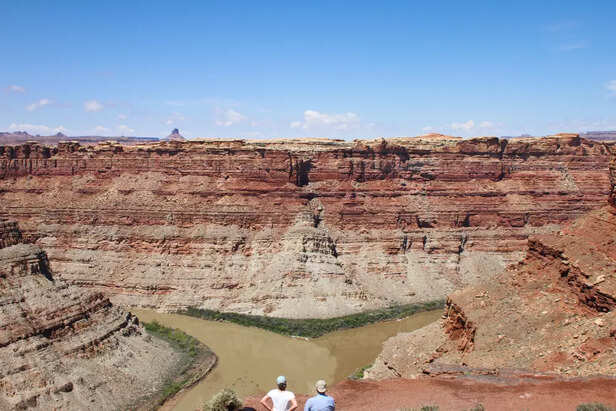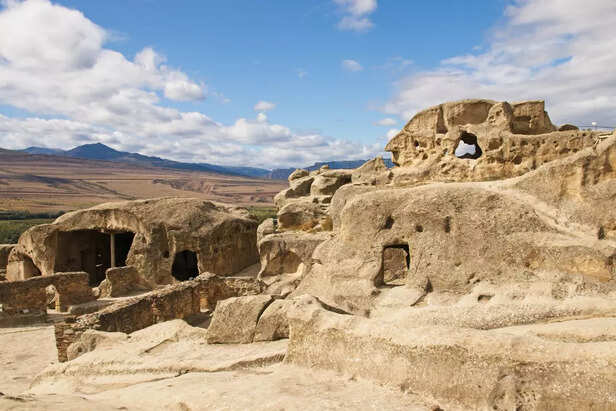1. The Indus Valley Civilization (India–Pakistan)
One of the world's earliest city cultures, it thrived circa 2500 BCE in cities such as Harappa and Mohenjo-Daro. Its sophisticated drainage, uniform weights, and as-yet-unreadable script suggest genius—but by 1900 BCE, it had declined, perhaps owing to climatic or riverine changes.

Indus Valley Civilization
( Image credit : Freepik )
2.The Maya Civilization (Central America)
From 2000 BCE to 900 CE, the Maya cultivated astronomy, writing, and step-pyramids. Around 900 CE, cities were abandoned. Theories are that warfare, drought, and overpopulation were responsible for the collapse.

The Maya Civilization
( Image credit : Freepik )
3.The Ancestral Puebloans (North America)
Also referred to as the Anasazi, they inhabited what is now Southwestern USA and constructed elaborate cliff dwellings. During the 13th century, they suddenly vacated their settlements—maybe because of environmental stress or resource exhaustion.
4.The Kingdom of Aksum (Ethiopia)
This influential African empire was a commercial crossroads between Rome and India (1st–7th century CE). Its fall is uncertain, but climate change, loss of trade, or Islamic expansion may be causes.
5.The Olmec Civilization (Mexico)
Renowned for massive stone heads, the Olmecs thrived from 1200 to 400 BCE. As one of Mesoamerica's first cultures, their legacy continued in the Maya and Aztec. Their extinction continues to be argued.

The Olmec Civilization
( Image credit : Freepik )
6. Rapa Nui (Easter Island)
Famous for Moai statues sculpted out of volcanic rock, this island culture went into decline during 1200 to 1600 CE—maybe because it cut down trees, had too many people, or fought a civil war.
7. The Khmer Empire (Cambodia)
Builders of the grand Angkor Wat, the Khmer dominated Southeast Asia during the 9th to 15th centuries. Perhaps their downfall was caused by Thai invasions, water management disaster, or environmental changes.
8.The Hittite Empire (Turkey)
Indo-European rivals of Egypt, the Hittites fell some time around 1200 BCE. Speculation includes sea invasions and civil strife as factors in the wider collapse of the Bronze Age.
9.The Nabateans (Jordan)
Engineers of Petra, the Nabateans were desert trade and water masters. They vanished mysteriously by the 3rd century CE, following Roman annexation and changes in trade routes.
10.The Sanxingdui Civilization (China)
This Bronze Age civilization disappeared about 1100 BCE, leaving stunning jade and gold masks behind. Its extinction remains a mystery; natural disasters or migration are put forth as theories.
11.The Minoans (Crete, Greece)
The first advanced civilization of Europe, renowned for palaces and myth (such as the Minotaur). They declined around 1450 BCE—perhaps due to the Thera volcanic eruption or Mycenaean conquest.
12.The Garamantes (Libya)
Thriving in the Sahara between 500 BCE and 700 CE, they established underground irrigation (foggaras). When trade routes changed and the climate became drier, their cities gradually ceased to be occupied.
13.The Cucuteni-Trypillia Culture (Ukraine-Moldova-Romania)
Between 5500 and 2750 BCE, they constructed large settlements and pottery with complex decorations. Why they disappeared is unknown—presumably climate or invasions had a role.
14.The Mississippian Culture (USA)
Builders of Cahokia Mounds, they flourished until 1500 CE in North America. Collapse is possibly due to environmental stresses, warfare, or European encounter.
15.The Norte Chico Civilization (Peru)
Thriving from 3000–1800 BCE, they constructed cities without pottery or evidence of warfare. Their gradual collapse is one of South America's oldest enigmas.
Where Are They Now? – Cultural Survivals
A few "lost" civilizations survive—via language, celebrations, ceremonies, and genetic legacies.
1.The Indus Valley Civilization (India–Pakistan)
Now: Aspects of their urban design, handicrafts, and symbolism are inherited by contemporary Sindhi and Punjabi areas.

The Indus Valley Civilization
( Image credit : Unsplash )
2.The Maya Civilization (Central America)
Now: More than 6 million Mayans retain language (such as Yucatec), ceremonial practices, and farming methods.
3.The Ancestral Puebloans (North America)
Now: Hopi, Zuni, and other groups hold oral traditions, pottery, and ancestor-inspired architecture.
4.The Kingdom of Aksum (Ethiopia)
Now: Ethiopia's Orthodox Christianity, writing (Ge'ez), and monarchical lineage trace to Aksum.
5.The Olmec Civilization (Mexico)
Now: Later cultures such as the Maya and Aztec continued Olmec myths, art, and cosmology
6.Rapa Nui (Easter Island)
Now: The island's 3,000+ inhabitants continue to carve, dance, and follow Polynesian ways.
7.The Khmer Empire (Cambodia)
Now: Angkor Wat continues to be Cambodia's national symbol; Khmer festivals and dance are celebrated far and wide.
8.The Hittite Empire (Turkey)
Now: Parts of Hittite words entered Turkish; their codes of law and myths influenced later Near Eastern societies.
9.The Nabateans (Jordan)
Now: The Bedouin people retain Nabatean culture-based architectural practices and oral traditions.
10. The Sanxingdui Civilization (China)
Now: Modern Chinese art is influenced by artifacts and inspires pride in ancient ingenuity at the national level.
11. The Minoans (Crete, Greece)
Now: Labyrinth myths and Cretan festivals and music are traced back to Minoan heritage.
12. The Garamantes (Libya)
Now: The Berber Tuareg of Libya have retained water systems and desert life similar to that of the Garamantes.
13. The Cucuteni-Trypillia Culture (Ukraine-Moldova-Romania)
Now: Pottery motifs and settlement patterns give rise to local myths and archaeological tourism.
14.The Mississippian Culture (USA)
Now: Southeastern Native American nations maintain mound-building traditions and myths.
15.The Norte Chico Civilization (Peru)
Now: Peruvian coastal communities mirror ancient irrigation and communal food habits.
Lessons from the Collapse of Ancient Civilizations
The fall of ancient civilizations was rarely due to a single cause. It often involved a complex mix of environmental, economic, political, and social factors. Modern scholars also point toward a civilization's
resilience and adaptability as key determinants of survival. For instance:
- Societies that diversified their economies and developed flexible political systems were more likely to withstand challenges.
- Civilizations that depended too heavily on a single resource or centralized authority were more prone to collapse during periods of crisis.
- External contacts—such as trade, migration, or invasion—played both destructive and regenerative roles.
Timeslife:
Explore the latest trends and tips in
Health & Fitness,
Travel,
Life Hacks,
Fashion & Beauty, and
Relationships at
Times Life!












